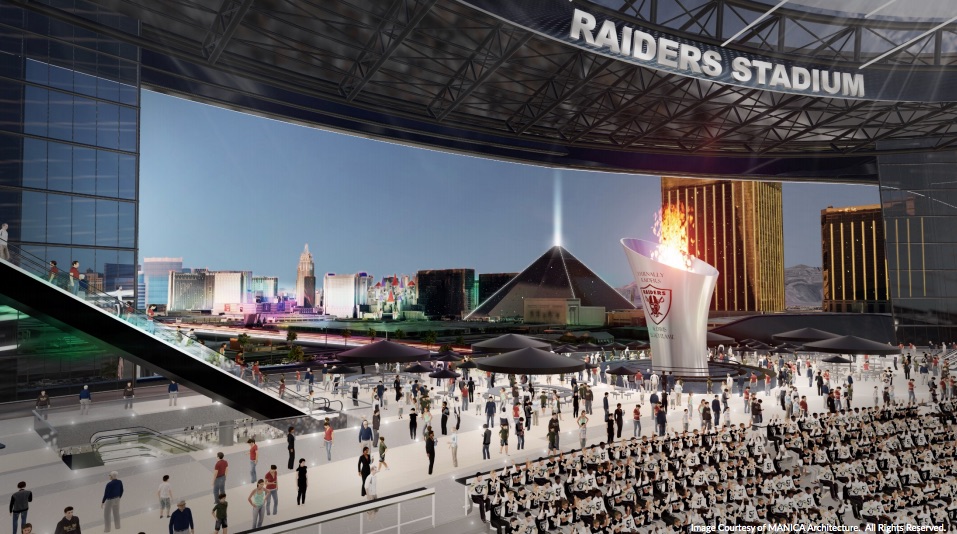On Thursday, officials said that they believe infrastructure upgrades will allow the Oakland Raiders‘ new Las Vegas stadium to open in 2020.
The Las Vegas Stadium Authority convened on Thursday, and Raiders officials also had a closed door meeting with several local groups and elected leaders, including Clark County commissioner Steve Sisolak. One of the most pressing issues facing the project now is the preparation of the stadium site, which is expected to be a 62-acre location on Russell Road, west of Interstate 15.
Several surrounding roadways are slated for upgrades. The Nevada Department of Transportation (NDOT) is expected to reconfigure the I-15 interchange at Tropicana Avenue. As part of a different project, NDOT will also create an access ramp that connects a carpool lane to Harmon and Hacienda avenues.
Those projects are not expected to be completed by 2020, but officials believe that the construction and opening of the facility will still take place. Several other projects, including some carried out by the Regional Transportation Commission of Southern Nevada are also in the works, and the Raiders are expected to assist in the cost of stadium-related road improvements. More from the Las Vegas Review-Journal:
To make that happen, Sisolak said he will “implore” local transportation agencies to accelerate previously planned road improvements, adding that the Raiders will pay a share of costs for projects specific to the stadium.
“It’s tight, there’s no wiggle room, there’s no room for error, but it it can be done in time to be open for the 2020 season,” Sisolak said after toggling between the public Las Vegas Stadium Authority meeting and a private gathering with Raiders team representatives.
“But that means we have to get to work quickly,” Sisolak said. “I’m confident we can make it happen.”
Additionally, the Raiders plan to file “very soon” for a height-requirement review with the Federal Aviation Administration — most likely for the team’s preferred 62-acre site on Russell Road, just west of Interstate 15, Sisolak said.
Due to the site’s proximity to McCarran International Airport, the report is expected to uncover potential problems related to height, lighting and after-game fireworks at the stadium.
While infrastructure work will be a priority going forward, the Raiders and the Las Vegas Stadium Authority are still working to finalize terms for the team’s lease. The proposal unveiled on Thursday would not require the Raiders to pay an annual rent fee. When discussing this term on Thursday, authority members said that the concept–which is not final–is consistent with previous discussions. More from The Nevada Independent:
Stadium Authority Chairman Steve Hill said the no-rent policy shouldn’t come as a surprise to anyone following the stadium discussions over the last year.
“It has been forever,” he said. “You’ll notice we are very consistent with that. We are upholding the deal we worked through at the tourism infrastructure committee, and that remains the case today.”
[Attorney Mark] Arnold said the Raiders’ financial contribution to the construction project amounts to rent.
The 65,000-seat stadium is expected to cost roughly $1.9 billion, with $750 million of that generated through the hotel room tax increase approved by state lawmakers last year. That leaves the Raiders responsible for securing financing for the remaining $1.15 billion. The team likely will put $100 toward the project and pay the rest via a $200 million NFL loan, an estimated $200 million from PSL sales and a $650 million loan from Bank of America.
The NFL approved the Raiders’ relocation request in March, though the team is expected to play at the least the 2017 and 2018 seasons at the Oakland-Alameda County Coliseum.
RELATED STORIES: Tax Hike for Raiders Las Vegas Stadium Closes First Month; Coliseum Lease Under Review; Raiders Seek Stadium Site; NFL Approves Oakland Raiders Move to Las Vegas

